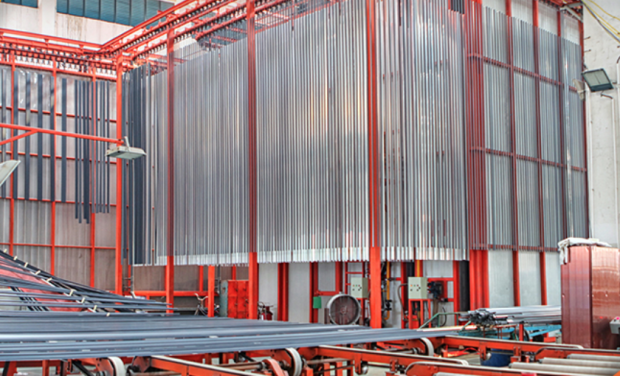Aluminum curtain walling is something you might not be familiar with, although you probably encounter examples daily. Because an aluminum curtain wall may offer a building an attractive appearance while still providing many valuable functions, it is often used in commercial and architecturally significant structures.
The concept of curtain walls dates back to ancient times when our predecessors added such barriers to their structures to fortify them against the elements and potential attackers. Although we no longer have to defend our communities from invading armies, the numerous advantages of aluminum curtain walling have made it a popular building material in recent years.

Aluminum curtain walling has many potential benefits for your building’s construction, including the following.
Sealing Out the Weather
It is well known that the original purpose of curtain walls was to prevent the infiltration of elements like rain or wind. But this is a benefit that continues to be useful today. Your aluminum curtain walling should be considered an additional protective layer that will insulate and block out rain and wind.
In contrast to other building surfaces, your aluminum curtain wall is highly low-maintenance and economical, making it an excellent choice for humid climates.
Quality of Design that’s Appealing
Even though protecting a building from the elements is the primary function of aluminum curtain walling, the fact that this construction can significantly enhance the aesthetic of a structure makes it very popular among designers and architects.
Curtain walling, for one, can transform a building into something that looks quite contemporary and elegant. Furthermore, this form of curtain walling’s adaptability and lightweight qualities allow architects to unleash their creativity, resulting in landmark buildings that are the talk of the town.
Whether you want a curved structure with extreme and fascinating angles or just a classic on the city’s skyline for many years, aluminum curtain walling may help make that dream building a reality.
This adaptable framework also allows for different materials, with several architects successfully incorporating components like stone or other metals into their curtain walling.
Natural Light
The amount of daylight that enters a structure is a crucial factor in its design. Because people inside any facility, from an office to a hospital, benefit emotionally and productively from exposure to natural light.
In addition to helping the environment, having more natural light means spending less money on artificial lighting. The psychological effect of being in a bright, airy space with windows that look out over greenery could also increase the building’s market value.
UV-filtering glass makes these cases particularly well-suited for display in museums and galleries, where the contents are at risk of deteriorating over time without proper care.
However, not all building designs effortlessly welcome an abundance of outside illumination. This is where your aluminum curtain walls come in handy; by making use of these walls, you can easily increase the amount of glass in your building, allowing more natural light to enter your workspace.
Thermal Regulation
Aluminum curtain walls are well-known for their weatherproofing properties, but they also insulate warm air well, making them perfect for climate control. This is because a curtain wall acts as an additional layer within a building, moderating internal temperatures.
As a result, you’ll save money in the long run on maintaining a comfortable temperature within your building.
Structural Stability
An aluminum curtain wall isn’t necessarily what comes to mind when you think of building reinforcements, what with how commonly glass makes up curtain walls. However, due to their ability to span multiple stories, these additions actually strengthen the building, making it less susceptible to damage from high winds.
Curtain walls help with thermal expansion and contraction, water diversion, and other issues.
Lightweight and Flexible
Curtain walls, unlike load-bearing walls, can be constructed out of lighter materials like aluminum or other metals. Adding timber to an otherwise aluminum curtain wall creates a less industrial look and is more in keeping with the surrounding environment.
This gives you a lot of leeway regarding how you want your curtain wall to look while still serving to reinforce your building’s construction.
The Containment of a Fire
Suppose a catastrophe, such as a fire, occurs inside a structure. In that case, the aluminum curtain walling that you have installed can assist in putting out the fire by assisting in the prevention of spread throughout the surface of the building. Since fires in large structures tend to go from level to level using any available exterior space, this is a common concern.
Read More:

